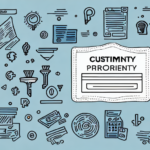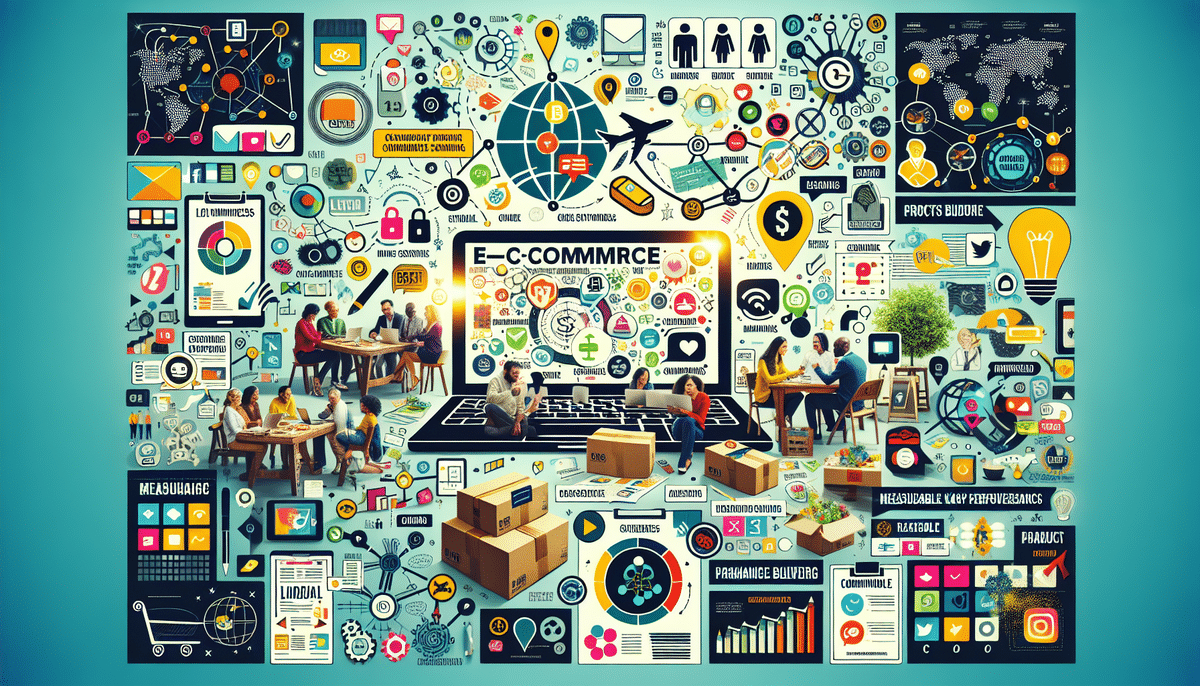Unlock the Benefits of Ecommerce Loyalty Programs
In today's fiercely competitive ecommerce landscape, businesses are constantly seeking innovative ways to differentiate themselves and cultivate a loyal customer base. One effective strategy to achieve this is through ecommerce loyalty programs. These programs reward customers for their repeat business and incentivize them to continue shopping with a particular brand. In this article, we'll explore the numerous benefits of ecommerce loyalty programs, the various types available, and how to design a successful program that can help your business thrive.
Why Loyalty Matters in Ecommerce
Building customer loyalty is crucial for businesses of all sizes, especially in the ecommerce sector. A loyal customer is not only more likely to make repeat purchases but also to recommend the brand to friends and family. According to a survey conducted by Nielsen, 92% of consumers trust recommendations from friends and family over all other forms of advertising. This highlights the significant impact a loyal customer base can have on your brand’s reputation and bottom line.
One effective way to build customer loyalty in ecommerce is through personalized experiences. By leveraging data and analytics, businesses can tailor their marketing efforts and product recommendations to each individual customer's preferences and behaviors. This not only enhances the shopping experience but also demonstrates that the brand values and understands their needs. In fact, a study by Epsilon found that personalized emails had an open rate 29% higher than non-personalized ones. Investing in personalized marketing strategies can lead to increased customer loyalty and higher revenues for ecommerce businesses.
The Psychology Behind Ecommerce Loyalty Programs
At its core, a loyalty program taps into the psychological concept of reciprocity. When customers receive something of value from a brand, such as a reward or special discount, they feel a sense of obligation to reciprocate by continuing to shop with that brand. Additionally, loyalty programs provide customers with a sense of exclusivity and belonging, which are powerful motivators for ongoing engagement. Understanding these psychological factors allows businesses to design programs that effectively incentivize customers to return and continue shopping.
Another critical psychological element is gamification. Incorporating game-like elements, such as points, badges, and levels, can harness customers' natural desire for competition and achievement. This makes the loyalty program more engaging and enjoyable, increasing motivation to participate and continue shopping with the brand. Gamification also creates a sense of progress and accomplishment, further strengthening customer loyalty.
Types of Ecommerce Loyalty Programs to Consider
When deciding on a loyalty program to implement, it's important to consider the different types available. The most common types include:
- Points-Based Systems: Reward customers with points for every purchase they make, which can be redeemed for rewards.
- Tiered Systems: Offer different levels of rewards based on a customer's spending level or membership status.
- Cashback Programs: Provide customers with a certain percentage back on their purchases in the form of cash or credit for future purchases.
Each type of program has its advantages and disadvantages, and businesses should consider their customer base and overall goals when deciding which program to implement.
Additionally, Referral Programs incentivize customers to refer their friends and family to the business, often by offering discounts or rewards for successful referrals. This type of program can be particularly effective for expanding the customer base through word-of-mouth marketing.
Some businesses may choose to implement a Hybrid Loyalty Program, combining elements of different types of programs. For example, a business might offer a points-based system with tiered rewards or a cashback program with referral incentives. This approach allows businesses to tailor their loyalty program to their specific needs and goals.
How to Design a Successful Ecommerce Loyalty Program
Designing a successful ecommerce loyalty program involves several key elements:
- Ease of Use: The program should be easy to understand and use. Customers should be able to earn and redeem rewards without unnecessary complications.
- Compelling Rewards: Offer rewards that align with customer interests and desires to make the program attractive.
- Community and Exclusivity: Foster a sense of community and exclusivity among loyal customers to enhance their connection with the brand.
Another important aspect is personalization. Tailoring rewards and offers to each customer's unique interests creates a more engaging and personalized experience, encouraging loyalty. Regularly evaluating and adjusting the loyalty program ensures it remains relevant and effective. This can involve gathering customer feedback, analyzing program data, and staying updated on industry trends and best practices.
Tips for Implementing an Effective Ecommerce Loyalty Program
Implementing an effective loyalty program requires careful planning and execution:
- Communicate the Program’s Value: Clearly convey the benefits of the program to customers through various channels, such as social media and email marketing.
- Seamless Integration: Ensure the program is smoothly integrated into your ecommerce platform, making it easy for customers to access information about rewards and how to earn them.
- Personalized Rewards: Analyze customer data to offer rewards tailored to individual preferences and shopping habits, increasing engagement and loyalty.
- Easy Redemption: Provide clear instructions on how to redeem rewards and ensure the process is simple and straightforward to prevent customer frustration.
Measuring the Success of Your Ecommerce Loyalty Program
Measuring the success of an ecommerce loyalty program is essential to understanding its impact on your business. Key performance indicators (KPIs) to track include:
- Customer Retention Rates: The percentage of customers who continue to make purchases over time.
- Average Order Value: The average amount spent per order.
- Customer Lifetime Value: The total revenue a business can expect from a single customer account.
Additionally, tracking the frequency of customer purchases can help determine if the loyalty program is encouraging repeat business and increasing customer engagement. Monitoring customer feedback and satisfaction levels ensures that the program meets the needs and expectations of your customers.
Innovative Ideas for Rewarding Loyal Customers in Ecommerce
Keeping your loyalty program fresh and exciting can significantly boost customer engagement. Consider offering innovative rewards and incentives such as:
- Exclusive access to new products or special promotions
- Personalized recommendations based on purchase history
- VIP customer service experiences
By continually innovating and providing value, businesses can keep customers engaged and motivated to continue shopping.
The Role of Personalization in Ecommerce Loyalty Programs
Personalization is a crucial element of effective ecommerce loyalty programs. By leveraging customer data, businesses can create tailored experiences that meet each customer's unique preferences and needs. This can include personalized recommendations, rewards based on individual purchasing habits, and customized messaging. Personalized experiences deepen customer loyalty and encourage repeat business.
Common Mistakes to Avoid When Creating Ecommerce Loyalty Programs
When creating an ecommerce loyalty program, it's important to avoid common pitfalls that can undermine its effectiveness:
- Complex Reward Structures: Offering rewards that are too difficult to earn or redeem can discourage participation.
- Poor Communication: Failing to effectively communicate the program's value and benefits to customers can lead to low engagement.
- Lack of Integration: Not seamlessly integrating the program into the ecommerce platform can create a disjointed customer experience.
By avoiding these mistakes and focusing on the key elements of a successful program, businesses can create a loyalty program that effectively incentivizes repeat business.
How to Leverage Social Media for Your Ecommerce Loyalty Program
Social media can be a powerful tool for promoting and enhancing ecommerce loyalty programs. Businesses can use social media platforms to:
- Communicate the program’s value and promote rewards
- Encourage user-generated content and customer engagement
- Offer exclusive promotions or content to program members
Leveraging social media in these ways can further incentivize repeat business and enhance customer loyalty.
The Future of Ecommerce Loyalty Programs and What to Expect
The future of ecommerce loyalty programs is likely to involve increased use of data and personalization to create more targeted and effective programs. Additionally, loyalty programs may incorporate more gamification elements, such as challenges or badges, to foster greater customer engagement. Businesses should continue to analyze customer data and stay abreast of industry trends to ensure their loyalty programs remain effective and engaging.
Examples of Successful Ecommerce Loyalty Programs from Top Brands
Many top brands have successfully implemented ecommerce loyalty programs. For example:
- Sephora's Beauty Insider: This program rewards customers with points for purchases and offers different tiers based on spending levels, with exclusive rewards for top-tier members.
- Amazon Prime: Offers a variety of exclusive benefits, such as free two-day shipping, streaming of movies and TV shows, and early access to select products.
Studying successful programs from top brands can provide valuable inspiration for designing your own loyalty program.
Challenges You May Face When Launching an Ecommerce Loyalty Program
Launching an ecommerce loyalty program can present several challenges, especially for smaller businesses with limited resources. Common challenges include:
- Creating an effective rewards system
- Effectively promoting the program to customers
- Integrating the program seamlessly into the ecommerce platform
By planning carefully and prioritizing the key elements of a successful program, businesses can overcome these challenges and create a loyalty program that effectively incentivizes repeat business.
How to Keep Your Customers Engaged with Your Ecommerce Loyalty Program
Sustaining customer engagement is critical for the long-term success of an ecommerce loyalty program. Businesses can keep customers engaged by:
- Regularly communicating program updates and rewards
- Offering personalized recommendations based on purchase history
- Continuously innovating with new rewards and features
- Gathering feedback from program members to identify areas for improvement
By continually optimizing the program based on customer feedback and changing preferences, businesses can maintain customer interest and loyalty over the long term.






















